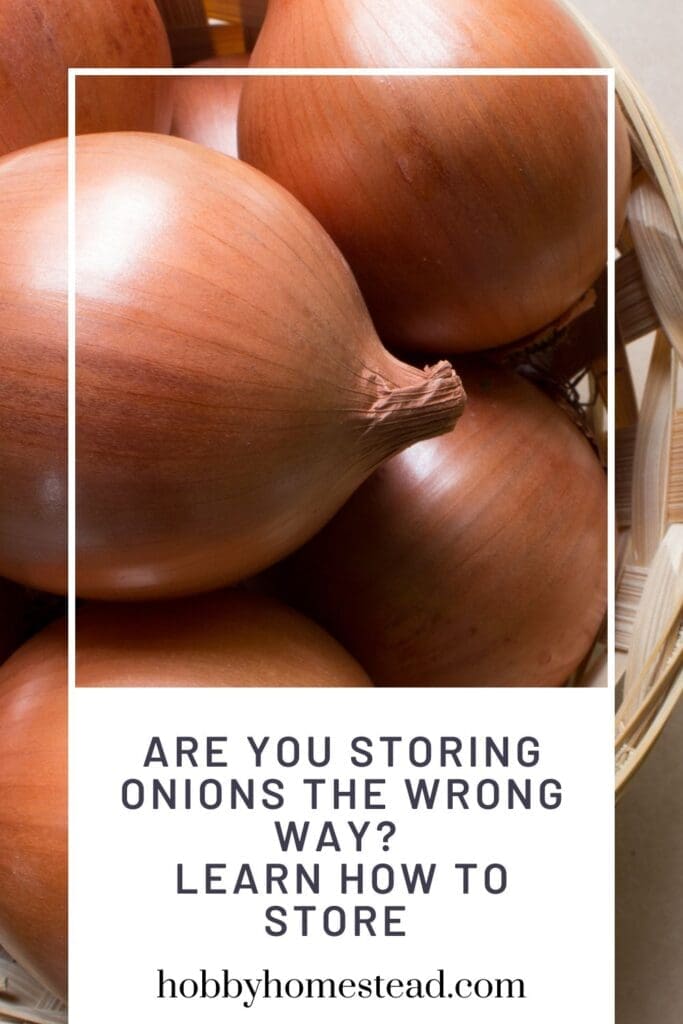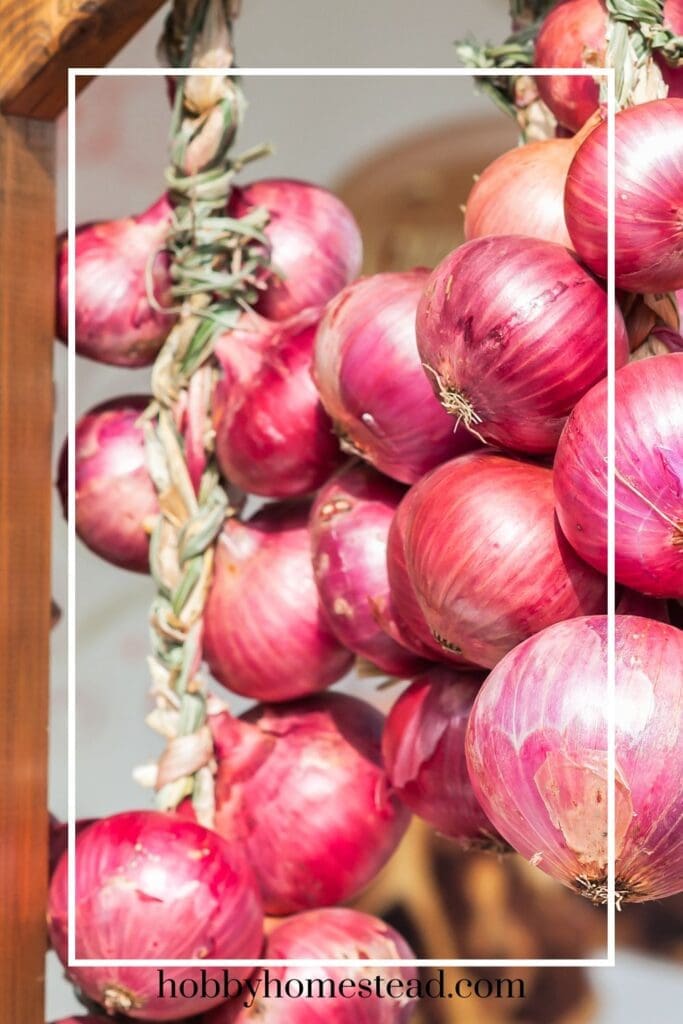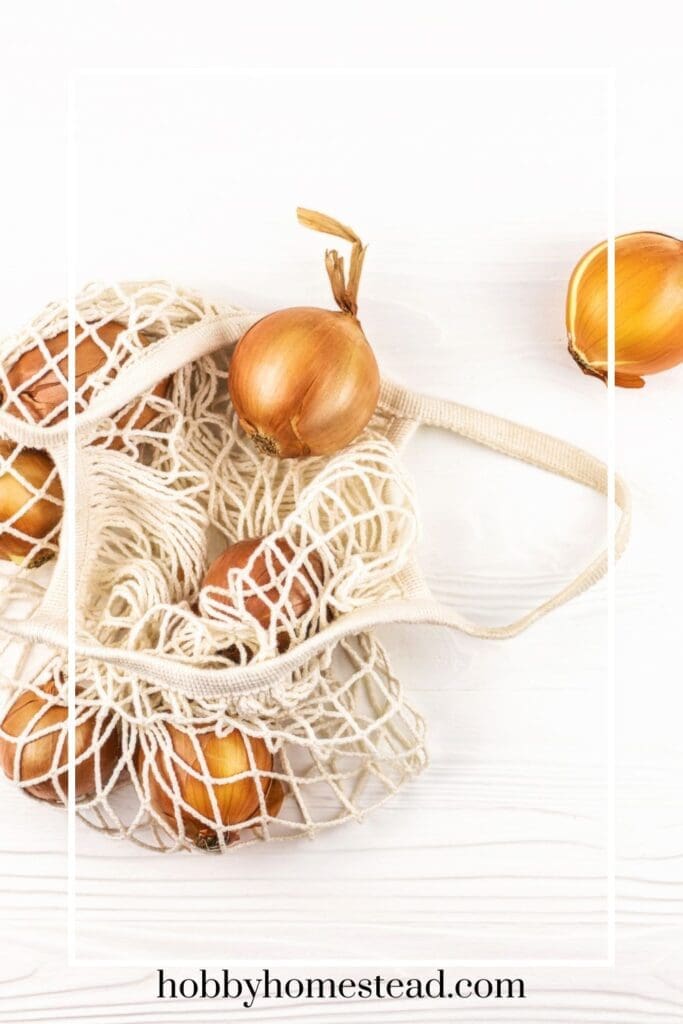Last updated on April 25th, 2025 at 09:57 am
Are you storing onions the wrong way? Properly storing onions is the best way to keep them fresh and flavorful for longer. There’s nothing more frustrating than reaching for an onion only to find it soft or moldy. Fortunately, with a few simple storage techniques, you can extend their shelf life, reduce food waste, and always have a good onion ready for your favorite recipes.
Storing onions correctly can greatly extend their shelf life. Different storage methods work best for different onion types, depending on how long you need to keep them. Whether you’re using sweet onions right away or storing stronger varieties for the long haul, choosing the right approach makes all the difference.
Are You Storing Onions the Wrong Way? Learn How to Store Every Variety
Storing onions might seem straightforward, but did you know that different types require different handling to stay fresh longer? Whether you have sweet onions, red onions, green onions, or Walla Wallas, here’s the best way to keep them fresh and flavorful.

Understanding Onion Types
- Sweet Onions: These delicate onions have a high moisture content and are best stored in a cool, dry place away from direct sunlight. Avoid storing them near potatoes, as they can absorb odors.
- Red Onions: Known for their vibrant color and mild flavor, red onions should be kept in a cool, dry place with good air circulation. Use a mesh bag or open basket to allow airflow.
- Green Onions: These fresh, crisp onions are best stored in the refrigerator. Place them in an airtight container or a plastic bag with a damp paper towel to maintain moisture.
- Walla Wallas: These sweet onions are best stored at room temperature in a cool, dry spot. Use them within a few weeks to enjoy their unique flavor.
Best Practices for Storing Onions
- Whole Onions: Store whole onions in a cool, dry, and well-ventilated place with good air circulation. A mesh bag or open basket works well to keep them fresh.
- High Moisture Content: Onions with high moisture content, like sweet onions, should be stored in a dry place to prevent them from spoiling quickly.
- Airtight Containers: Use airtight containers, freezer bags, or wrap onions in paper towels to help extend their shelf life and prevent them from absorbing other odors in the fridge.
- Avoid Direct Sunlight: Keep onions away from direct sunlight, as it can cause them to sprout or spoil faster.
Best Storage Container Options for Onions
Choosing the right storage method can help keep your onions fresh for as long as possible. Here are some of the best ways to store them while allowing proper airflow and preventing spoilage.
Mesh Bags or Netting
A great way to store whole onions is by placing them in mesh bags or netting, which allows air to circulate and prevents moisture buildup. You can hang these bags from hooks or nails in a dry, airy space, ensuring your onions stay fresh for longer.

Braided Onion Tops
If your onions have long, flexible stems, braiding the tops together creates a natural hanging chain. This traditional method keeps onions well-ventilated, makes it easy to grab one when needed, and even adds a rustic charm to your kitchen or pantry.
Pantyhose Storage Method
For a space-saving and effective storage option, try using pantyhose. Simply place an onion into the foot of the pantyhose, tie a knot above it, add another onion, and repeat until the leg is full. Hang the pantyhose in a cool, dry place, and when you need an onion, just cut below a knot. This method helps maintain airflow and prevents onions from touching, reducing the risk of spoilage.
By using these storage techniques, you can extend the shelf life of your onions while keeping them organized and easily accessible!
Wire Boxes or Other Storage Boxes
Using a wire box or a similar breathable storage container is another great way to keep your onions fresh. The open structure of a wire box allows for excellent airflow, which helps prevent moisture buildup and ensures the onions stay dry. For a more budget-friendly option, you can repurpose wooden crates or cardboard boxes, as long as they have ventilation holes to allow proper airflow.
These boxes work well for storing larger quantities of onions and can be placed in a cool, dry, and dark spot like a pantry or cellar. Just be sure to check them periodically for any signs of sprouting or rot, as onions stored in bulk can sometimes hide problems that are not immediately visible.
Additional Tips
- Outer Skin. Leave the outer skin on onions until you’re ready to use them. It helps protect the inner layers and keeps them fresh longer.
- Ethylene Gas. Store onions away from ethylene-producing fruits like apples and bananas, as this gas can cause them to spoil faster.

Common Onion Storage Mistakes
Storing onions may seem simple, but there are several common mistakes people make that can shorten their shelf life or cause them to spoil faster. Here are a few key mistakes to avoid:
Storing Onions in the Fridge
While it’s tempting to throw onions in the fridge to keep them cool, storing whole onions in the refrigerator can actually cause them to soften and spoil faster. The cold, damp environment of the fridge isn’t ideal for onions, especially those with a high moisture content like sweet onions. It’s best to store whole onions in a dry, cool place at room temperature.
Storing Onions in Plastic Bags
Plastic bags trap moisture, which can quickly cause onions to mold or rot. Instead, opt for breathable containers like mesh bags, netting, or open baskets to allow air circulation. This will help keep onions dry and prevent the growth of mold.
Storing Onions with Potatoes
Many people store onions and potatoes together, but this is a big mistake. Potatoes release moisture and ethylene gas, which can cause onions to sprout or spoil faster. It’s best to store onions and potatoes in separate, well-ventilated spaces.
Storing Unpeeled Onions in Direct Sunlight
While onions need light to cure, leaving them in direct sunlight for long periods can cause them to dry out or even sprout prematurely. Store onions in a dry, dark place to maintain their flavor and freshness.
Storing Onions with the Skin Removed
Once an onion’s outer skin is removed, it becomes more vulnerable to spoilage. If you need to store an onion that has been cut, wrap it in a damp paper towel and place it in an airtight container in the fridge to keep it fresh. Always use leftover onions within a few days.
Not Checking for Spoiling Onions
When you store onions in bulk, it’s important to check them regularly for any signs of spoilage. One rotten onion can quickly affect the others nearby. Make sure to remove any onions that have soft spots, mold, or sprouting to prevent them from affecting the rest of your stash.
Avoiding these common mistakes will help ensure that your onions stay fresh, flavorful, and ready to use when you need them.
Conclusion
By following these simple storage tips, you can ensure your onions stay fresh and flavorful for longer periods. Whether you buy them from the grocery store or grow them in your garden, proper storage is key to enjoying onions at their best.
Remember, a cool, dry place with good air circulation is the best environment for most onion varieties. Experiment with these tips and find what works best for your storage onions to minimize waste and maximize flavor.
Reference
University of Maine. What’s the best way to store onions?


